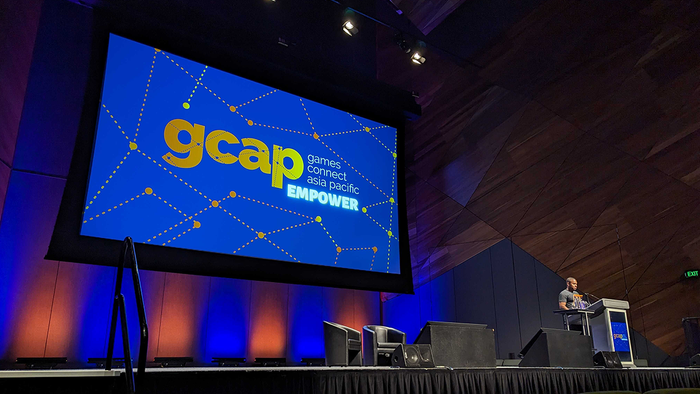The Musical Box #24: Singing Dogs
The Musical Box features 30 articles focusing on game music production and implementation. Edition #24: Sleeping Dogs

The open world genre is dominated by a mammoth called GTA, but in the last few years there were some games that turned out to be excellent experiences. One of these games is Sleeping Dogs, released by Square Enix in 2012. Set in modern Hong Kong, this marvelous game has everything you would expect: driving, fighting, shooting, robbing, and running around. But there’s one thing that really grabbed my attention: karaoke.
Profile
Game: Sleeping Dogs
Released: 2012
Platform: PS3 and Xbox 360
Developer: United Front Games and Square Enix London Studios
The Set-Up
Karaoke is one of the many (great) minigames one can find in this game. The player must use the analog stick to match the note bar displayed on the diagram. To reach the highest and lowest notes, the player needs to fully move the analog stick up and down. The challenge lies in hitting the notes of various pitches and transitioning from one note to another. Because the game fully uses the sensibility of the analog stick, the player is constantly trying to find the right pressure to reach each note and to perform well.
The sound implementation of this minigame is the star here. First of all, the singer (which I assume is the voice actor for the main character) sounds insecure, just like we all do when we sing karaoke (thumbs up for the musical direction). Secondly, the sound programmers implemented a very discreet pitch shifter whenever the player hits a wrong note. So, even if you’re not far from the target note, you can still hear changes in the vocal line and the whole thing doesn’t sound quite right. In short, you control your pitch by moving the analog stick.
The Moment
Check out the video below to see a horrendous performance of the classic Take on Me by A-HA.
The Impact
Players really fell like they have the control over the character’s voice, especially because it’s hard to gauge the correct pressure to move the analog stick and hit the notes flawlessly. The anxiety that this generates is similar to the real thing, but without the need to feel ashamed in front of your friends.
Special thanks: Gilliard Lopes, Rafael Kuhnen, Fernando Secco, Sandro Tomasetti, Jen Timms and Saki (United Front Games).
Read more about:
BlogsAbout the Author(s)
You May Also Like







